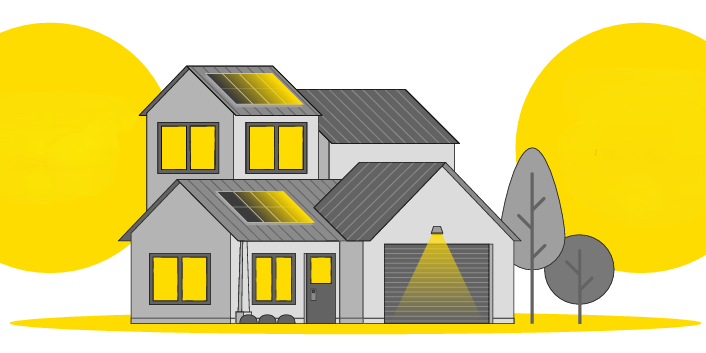Energy
GoSolr reveals SA
solar index
A GoSolr report reveals that rooftop solar energy reduced SA’s 2023 potential electricity supply gap by 44%, writes JASON BANNIER.
Despite only an estimated 0,69% of South African homes being equipped with rooftop solar installations, their impact reduced the potential electricity supply gap by 44% in 2023.
This finding was presented at a media roundtable in Johannesburg last week by GoSolr, SA’s largest provider of residential subscription solar solutions. The report, titled the “Light Paper ” Quarterly Solar Update (April 2024), introduced the SA Solar Index, and highlights the critical role of rooftop solar in the nation’s energy landscape.
“With 17.8 million homes in SA, less than 1% are harnessing solar energy”, said Andrew Middleton, co-founder and CEO of GoSolr. “40% of our solar energy produced wasn’t used last year.”
“This year is going to be the year of feeding energy back into the grid, but this does come with unintended consequences. For example, in California, excess power is created during the day and not enough during peaks.
“This causes challenges that municipalities and utilities must manage, but we think GoSolr is well-placed to help them manage this.”
Sello Mphaga, head of the CIty of Tshwane’s sustainability unit, said: “Much of the challenge is because of governmental relation. Energy used to be the breadbasket of municipalities. It used to even subsidise other services.
“We are bleeding from energy distribution where we are buying more, but getting less. It’s all a balancing act.”
Both Middleton and Mphaga acknowledged the importance of balancing SA’s energy ecosystem.
GoSolr’s report stresses the urgent need for radical reforms to foster a robust and decentralised energy grid. It highlights the stark contrast in policies across various provinces and called for a unified approach to overcome the current “patchwork policy problem” impacting the renewable energy sector.
The report details the broader implications of expanding solar energy use in SA, from cost savings and environmental benefits to job creation. However, it also underscores the complexities of inconsistent national policies and the varied promises made by political entities.
The SA Solar Index and the quarterly updates aim to provide a comprehensive analysis of the state of solar energy in SA, encouraging a proactive approach to resolving the ongoing energy crisis and setting a course for a sustainable energy future.
Key findings of the GoSolr quarterly update include:
- The state of solar – our cost-of-lighting is in crisis: Solar offers a viable solution and 5,440 MW of energy derived from roof top solar has been added to the grid as of March 2024, yet in 2023 South Africa’s electricity demand exceeded supply by some 16,000,000-megawatt blackouts.
- On the reality of regulatory changes – our patchwork policy problem with NERSA, government, Eskom, and 257 metropolitan, district and local municipalities operating in a near-siloed manner, the many players and inconsistent regulatory frameworks have resulted in a patchwork policy problem, while energy tariffs and electricity prices continue to rise.
- From obstacles to opportunities: While there are 17,8-million homes in South Africa, only about 124,000 (0,69%) of these have rooftop solar, yet South Africa ranks third in the world as having the best solar potential. If we successfully moved the industry in the right direction, decarbonising South Africa’s power sector could create ± 145,000 net jobs in the next two+ decades, while opening up key business ventures needed for installation, maintenance, and managing end of life solar solutions.
* Read GoSolr’s “Light Paper” Quarterly Solar Update (April 2024) here.
* Jason Bannier is a data analyst at World Wide Worx and writer for Gadget.co.za. Follow him on Twitter and Threads at @jas2bann.



















